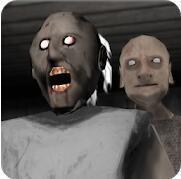Gender Abbreviation: 'He/She
In contemporary society, the abbreviations "M" and "F" have become ubiquitous shorthand for "male" and "female," respectively. These abbreviations encapsulate a wide range of social, cultural, biological, and psychological dimensions that shape our understanding of gender. While "M" and "F" offer a convenient way to categorize individuals based on their sex, they also spark debates about gender identity, roles, and equality. This article delves into various facets of "M" and "F," exploring their implications in biology, psychology, sociology, and culture.

Biological Dimensions
At the biological level, "M" and "F" are rooted in reproductive biology. Males (M) typically possess XY chromosomes, while females (F) have XX chromosomes. This genetic difference leads to the development of different reproductive organs and secondary sexual characteristics. Males develop testes, which produce sperm, and exhibit traits like facial hair, deeper voices, and muscle mass. Conversely, females develop ovaries, which produce eggs, and exhibit traits like breasts, wider hips, and a menstrual cycle.
These biological differences extend to hormonal profiles, with males producing higher levels of testosterone and females producing higher levels of estrogen and progesterone. These hormones influence not only physical characteristics but also behavioral tendencies. For instance, testosterone is associated with aggression and competitiveness, while estrogen is linked to nurturing and social bonding. However, it's crucial to note that these associations are not absolute, and individual differences within each gender can be substantial.
Psychological Dimensions
Psychologically, the distinctions between "M" and "F" are complex and multifaceted. Gender roles, shaped by societal norms and expectations, play a significant role in shaping behavior and identity. Traditional gender roles often portray males as assertive, independent, and rational, while females are seen as nurturing, empathetic, and communal. These stereotypes can influence self-perception, leading individuals to conform to expected behaviors.
However, recent psychological research has emphasized the fluidity and plasticity of gender identity. Gender-role theory suggests that individuals can adopt a spectrum of masculine and feminine traits, and that these traits are not inherently tied to biological sex. Gender-nonconforming individuals, who do not adhere strictly to traditional gender norms, challenge these binary categorizations and expand our understanding of gender diversity.
Moreover, psychological factors such as self-esteem, coping strategies, and emotional expression differ between males and females, but these differences are influenced by cultural and environmental factors. For example, males may be socialized to suppress emotions and emphasize achievement, while females may be encouraged to express emotions and prioritize relationships. Yet, these tendencies can vary widely across cultures and individuals.
Sociological Dimensions
Sociologically, "M" and "F" are embedded within a web of power relations and social structures. Gender inequality, a pervasive issue, manifests in various forms such as wage gaps, occupational segregation, and differential access to resources and opportunities. These disparities are often rooted in historical, cultural, and structural factors that perpetuate male dominance and female subordination.
Gender roles in the workplace can limit career advancements for women, while men may face societal pressures to conform to breadwinner roles. In the family domain, traditional gender roles often assign women to nurturing and household responsibilities, limiting their ability to pursue professional goals. Conversely, men may struggle with balancing work and family life, due to expectations of masculinity that emphasize career success and financial provision.
Intersectionality, a sociological concept, highlights the interconnectedness of gender with other identities such as race, class, sexuality, and ability. This framework acknowledges that experiences of gender inequality are not monolithic but are shaped by an individual's position within multiple social hierarchies. For instance, Black women may face unique challenges due to the confluence of racism and sexism, while transgender individuals may encounter discrimination based on their non-conformity to binary gender norms.
Cultural Dimensions
Culturally, "M" and "F" are constructs that vary across societies and historical periods. Different cultures have unique gender norms, roles, and identities that reflect their values, beliefs, and practices. For example, some societies emphasize gender equality, promoting similar rights and opportunities for both men and women. In contrast, others uphold patriarchal systems where men hold power and authority over women.
Cultural practices such as dress codes, grooming habits, and ceremonial rituals often reflect gendered norms. Traditional gender roles may be reinforced through storytelling, media representations, and religious teachings. Yet, cultural change is constant, and evolving social norms can lead to shifts in gender identities and expressions.
Globalization and technological advancements have facilitated the spread of diverse gender narratives, challenging traditional gender norms. Social media platforms, for instance, enable individuals to share personal stories and create online communities that celebrate gender diversity. This cultural exchange fosters greater understanding and acceptance of non-binary identities and alternative gender expressions.
Conclusion
In summary,
- 上一篇: 揭秘:如何轻松找到并打开微信视频号
- 下一篇: 探索海星的多样美味食用方式
新锐游戏抢先玩
游戏攻略帮助你
更多+-
01/31
-
01/31
-
01/31
-
01/31
-
01/31









